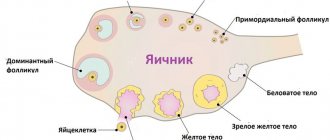During pregnancy, every woman undergoes a systematic examination, which helps monitor the growth and development of the fetus. At the heart of obstetrics and gynecology, the main thing is to create all the conditions for a woman in labor of reproductive age, which are aimed at the full course of pregnancy, the growth and development of the child. To do this, laboratory tests, routine examinations, and ultrasound are prescribed, which allows you to diagnose the baby’s condition or possible complications.
The first ultrasound examination in a normal pregnancy is prescribed at 9–11 weeks. If complications or pathologies of the fetus are suspected, an ultrasound scan is performed earlier. There are a large number of myths about the harmfulness of ultrasound waves, but this research method has been carried out for more than 70 years, and during this time it has helped prevent complications or abnormalities of pregnancy, therefore ultrasound is considered the most informative and safe method of examination, even in a short period of time.
When is the best time to do an ultrasound after pregnancy is established?
The ultrasound diagnostic procedure must be performed already in the first trimester of gestation. However, the principle “the sooner the better” does not apply here. It is better to wait until the baby is a little older and can be clearly seen on the monitor.
Should I do it right away?
There is no need to run to the ultrasound diagnostic room immediately after a woman sees two lines on a pregnancy test.
Indications for this exist only in a number of specific cases when the health of the mother and child is at risk. For example, if there is a suspicion of an ectopic pregnancy or a risk of early miscarriage (in patients with a predisposition to this). The detection of a fertilized egg from the time it can be seen serves as indisputable confirmation of the very fact of pregnancy.
What week is the best time to have your first ultrasound?
As part of the first screening, ultrasound is prescribed between 10 and 14 weeks of pregnancy (on average, 12 weeks). An earlier or later procedure will not allow recording parameters that are key for the initial stage of pregnancy.
Who sets the dates for the first ultrasound?
A pregnant woman is referred to an ultrasound diagnostician free of charge by her attending gynecologist, based on the predetermined timing of pregnancy and current symptoms.
Indications for ultrasound in the early stages
After the woman is registered, the attending physician keeps a chart of the pregnant woman, in which he collects anamnesis about previous diseases, hereditary factors, possible miscarriages or other disorders in the body. If a woman has a history of internal or chronic diseases that can provoke fetal abnormalities, then the expectant mother is required to undergo an ultrasound scan. Particular attention is paid to such pathological processes.
- Chronic diseases: diabetes mellitus, diseases of the circulatory system, diseases of the nervous system, cardiovascular system;
- A woman’s history of failure to carry a pregnancy to term, fetal loss, miscarriages, abnormal phenomena, when the first child was born with pathologies or abnormalities;
- If you have cancer or diseases of the pelvic organs;
- Prolonged and severe toxicosis and other pathological processes in which the doctor may have doubts.
What not to eat before the test
The diet a few days before an abdominal ultrasound should not contain foods that contribute to increased gas formation:
- milk and products made from it;
- cauliflower and white cabbage;
- beans, peas;
- onion;
- radish, radish;
- mushrooms;
- whole grain bread and boiled cereals (except rice);
- apples, pears;
- grape;
- peaches;
- Jerusalem artichoke;
- juice, sparkling water.
If other screening tests (blood tests) are performed simultaneously with ultrasound, the list of dietary restrictions will be expanded.
Reasons for unscheduled ultrasound
The doctor may prescribe an ultrasound scan ahead of schedule if he or the pregnant woman has doubts about the correct course of the pregnancy:
- there are complaints of nagging pain in the lower abdomen, various vaginal discharge;
- poor tests for hCG or other hormones;
- the patient had previously suffered a miscarriage or a frozen, ectopic pregnancy;
- the possibility of fetal pathology and other reasons.
In addition, the pregnant woman herself can insist on an ultrasound scan at up to 12 weeks if she has objective reasons for concern, for example, with an abrupt cessation of toxicosis or other previously more pronounced symptoms of pregnancy.
How is the ultrasound procedure performed?
The expectant mother most often comes to the sonologist's office by appointment.
Ultrasound diagnostics can be carried out in a clinic, which includes an antenatal clinic, or in a specialized diagnostic center with modern equipment (for example, if there are special indications).
How long does it take
Typically, the research procedure takes up to half an hour. The duration of the process depends not only on the quality of the equipment, but also on the experience of the diagnostician. Sometimes his assistant takes dictation.
How to do it
The first ultrasound is usually performed transvaginally. The specialist inserts the device with a condom on it into the vagina. This method, of course, can cause unpleasant experiences for shy women, but it should be remembered that the child’s health is a priority. The usual method of examination (abdominal), when the device is moved over the pregnant woman’s abdomen, is less effective in the first trimester. Signals from a small fetus are “muffled” by the layers of the uterus and muscles.
What are they watching?
During an ultrasound, the doctor records indicators indicating the condition of the embryo and the conditions of its development.
The number of embryos, the presence of a placenta and yolk sac are determined, and the size of the uterus and its appendages is measured. The size of the fetus from the crown to the tailbone and the diameter of the abdomen are recorded. The bones of the arms and legs are measured and their symmetry is established. Among the internal organs, the heart, stomach and brain are primarily examined - their location and size. Key indicators that are markers of trisomy (cases of excess number of chromosomes) and other pathologies:
- collar area size;
- development of the neural tube, its closure;
- visualization of the nasal bone.
The doctor is required to report in the conclusion about all detected abnormalities, for example, blood clots or detachment of membranes. Some of them are not fatal and can be corrected if doctors are informed in a timely manner.
Some additional information, for example, data on the smoothness of facial contours, indicating Down syndrome, cannot be obtained with outdated equipment.
Decoding
A gynecologist interprets the ultrasound results, but in case of anxiety and doubt, a pregnant woman can independently compare the parameters indicated in the conclusion with the normative ones (although only a specialist can give an accurate assessment of this information).
The coccyx-parietal size is designated by the abbreviation KTP. Its normative indicators differ at different times:
- At the beginning of the 10th week, the CTE is 3-4 mm.
- At week 11 – from 4.2 to 5 mm.
- Week 12 – CTE is 5-6 mm.
- At week 13 the figure is up to 7.5 mm.
The thickness of the nuchal translucency (TN) also varies depending on the period. At 10 weeks it ranges from 1.5 to 2.2 mm, at 11 weeks it can reach 2.4 mm, at 12 weeks - up to 2.5 mm, and in the middle of the 13th week - up to 2.7 mm.
The presence or absence of a nasal bone is considered one of the most important markers of pathologies, but a pregnant woman should not be alarmed if its size is not indicated - normally, the nasal bone cannot be accurately measured. From 12 weeks the bone size is 3 mm or more.
An important parameter is the heart rate (heart rate), in other words, the pulse of the embryo, which gradually becomes less intense in the first trimester:
- at 10 weeks – from 161 to 180 beats per minute;
- at week 11 – from 158 to 170 beats;
- 12 week – 149-173 beats per minute;
- at week 13 - from 146 to 170 beats per minute.
During a multiple pregnancy, some of these indicators may be lower, which is acceptable.
If the indicators go beyond the specified ranges, it is a reason to prescribe in-depth studies, sometimes with introduction into the placenta. Unfortunately, the consequence of procedures such as amniocentesis (puncture with amniotic fluid collection) can be fetal death or miscarriage.
What does ultrasound determine in the early stages?
An ultrasound examination will help prepare for the upcoming birth and provide an opportunity to monitor the characteristics and development of the baby. Ultrasound in the early stages will help determine the following features:
- presence of pregnancy - visualization of the fertilized egg in the uterine cavity can be noticed at 3 - 5 weeks, or after the last menstruation, when the egg is 2 - 3 mm.
- Exact period - at this stage, the size of the embryo is determined using the method of the size of the fetal sac, which corresponds to the days after the missed period. Very often, the doctor can make a mistake by 1 - 2 weeks.
- localization of the ovum - helps to determine intrauterine or ectopic pregnancy, which is determined within 7 to 10 days after a missed period.
- Number of embryos - a multiple pregnancy is detected at 5 - 6 weeks, when two or more fetal sacs are observed, whereas in a singleton pregnancy there is only one fetal sac.
- The viability of the embryo is confirmed.
- The functionality of the embryo's heart is determined at 3–4 weeks and is displayed on the monitor screen. At this moment, the mother can feel the first heartbeat, this also allows the doctor to make sure that the embryo is alive.
- Determining the sex of a child in the early stages is very difficult, and only an experienced doctor with many years of experience will be able to determine the sex by external signs at 12 - 13 weeks.
The condition of the cervix is also assessed, which under normal circumstances should be normal. Any disturbance in the uterus can cause miscarriage or complications.
How often can you do it
Although the ultrasound procedure is considered harmless, this is only due to the lack of information about possible harm to the fetus. Ultrasound waves expose the embryo to a certain effect, so experts recommend doing ultrasound as many times as the doctor prescribes (3-4 per pregnancy), and not undergoing the procedure on a whim or desire to get a high-quality image of the unborn child (using three-dimensional ultrasound).
Ultrasound examination in the first trimester is a universal procedure that allows not only to confirm the fact of pregnancy, but also to record the parameters of the fetus and the woman’s internal organs. It allows you to identify violations at an early stage and, if possible, correct them. Ultrasound is a painless and short-term procedure, as a result of which the mother learns the first reliable information about her child, which can have a decisive influence on his future fate.
Ultrasound of a pregnant woman with suspected pathology
In the early stages of pregnancy, pathological processes are often suspected, especially if the mother has a history of severe genetic diseases, internal infections that can cause complications in the development of the fetus, or lead to disability of the unborn baby.
In such cases, ultrasound is considered a necessary examination method that can prevent anomalies and give the woman the opportunity to decide and decide the future life of the unborn child. The most common pathologies that ultrasound can detect in the early stages are:
- Threat of miscarriage - if there is a suspicion of a threat of miscarriage, bloody clots very often form in the uterus, or placental abruption occurs, which can provoke a short-term miscarriage. An ultrasound examination will help detect the disorder and, with proper treatment, maintain the pregnancy.
- Identify diseases of the pelvic organs that can negatively affect the condition of the fetus.
- Developmental pathologies are diagnosed at the end of the first trimester. Ultrasound can detect such pathologies in the fetus as: heart defects, Down syndrome, underdevelopment, as well as some hereditary diseases and others that can provide the child with disability for life. Women in labor with suspected pathologies often undergo examinations that will help monitor the growth and development of the baby.
- At the end of the first trimester, the doctor can detect gestosis in pregnant women, which is also very dangerous for the pregnant woman.
- A frozen pregnancy occurs without any special symptoms and is characterized by a miscarriage that does not take place. In such cases, surgery is performed.
- Chromosomal abnormalities, uterine hypertonicity, chorionic detachment and others.
What is ultrasound and what is its danger?
Ultrasound examination itself has been known to the world for eight years. Ultrasound is a very important procedure that helps to identify abnormalities in the functioning of various organs and determine the progression of serious diseases.
The principle of operation of ultrasound: an ultrasonic wave falls on the surface of the body using a special apparatus, which is reflected or absorbed depending on the properties of the tissues located along its path, thus visualizing the required organ for examination.
We recommend reading: Low blood pressure during pregnancy, 2nd trimester of pregnancy, Back pain during pregnancy
The power of the ultrasonic wave is so low that it cannot harm the woman’s organs or the fetus, unlike X-ray examination.
It is important!
The first scheduled ultrasound should be performed at 10–14 weeks. It is during this period that it is possible to assess the development of the fetus and identify a number of anomalies or diseases that make it impossible or impractical to maintain pregnancy. The ultrasound results set the direction for further diagnostics, the purpose of which is to detail the circumstances and, based on the examination results, carry out medicinal correction of disorders, if required.
At earlier stages, many organs and systems of the fetus are not yet formed to such an extent that any conclusion about normality or pathology can be made. Therefore, if ultrasound was used to confirm the fact of pregnancy, this will allow you to immediately clarify the date and formulate a pregnancy management plan taking this into account.








